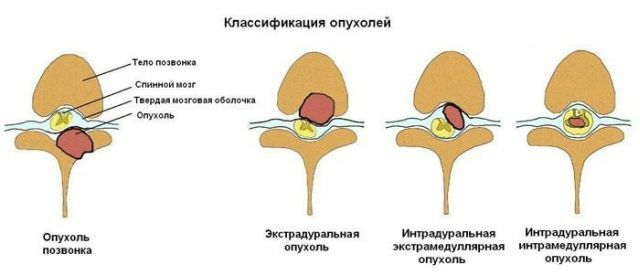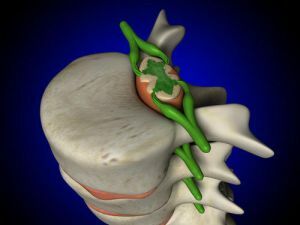 The spinal cord is an important part of the human body. It transmits information from the internal organs and cells of the whole organism to the brain. In addition, the spinal cord is responsible for the motor function and the functioning of the internal organs, allowing them to interact with each other and function properly.
The spinal cord is an important part of the human body. It transmits information from the internal organs and cells of the whole organism to the brain. In addition, the spinal cord is responsible for the motor function and the functioning of the internal organs, allowing them to interact with each other and function properly.
When the cells of the spinal cord are damaged, the person loses sensitivity and the ability to move( partially or completely).Also often the work of internal organs is disrupted.
Represents a long cylinder, 1-1.5 cm in diameter, which has three shells. The dense muscle tissue protects the spinal cord, which surrounds it from all sides, but this does not protect people from injuries.
The content of the medullary canal is unstable. Injuries to the spinal cord lead to serious consequences, which can result in complete paralysis or fatal outcome.

Anatomy of the spinal cord
Contents
- Nature and causes of trauma
- Varieties of spinal cord injuries
- Damage manifestation
- First aid: how to behave?
- In a medical institution
- Consequences of one careless step. ..
- Beware, it's very dangerous!
Nature and causes of trauma
It is important to begin treatment immediately if spinal cord and spinal cord injuries occur. This at times increases the chances of recovery. If the spinal cord was damaged, the following occurs:
- in the first stage, the damaged cells die instantly;
- through time due to oxygen starvation die nearby cells;
- after a few hours in the body launched a program of self-destruction of cells( apoptosis).
The more cells die, the more difficult it is to restore the functionality of the spinal cord. There are different causes of damage to the  spinal cord. Now several main groups are distinguished:
spinal cord. Now several main groups are distinguished:
- Automobile accidents .As statistics show, the greatest amount of damage to the spinal cord occurs during an accident. Suffer and drivers( the dangers are susceptible to the cervical department), and pedestrians.
- The fall from the height of .Most often, damage to the spinal cord during a fall from the height happens in sportsmen and extreme lovers( jumping from the bridge into the water, sharp diving in an unfamiliar place and so on).
- Getting injured in domestic or extraordinary conditions .These include falling from a height, deliberate injury, falling on ice, knife and gunshot wounds and so on.
- Birth injuries of the spinal cord, received by infants during delivery.
Types of spinal cord injuries
All spinal cord injuries are divided into open and closed spinal cord injuries. A feature of open injuries is damage to the spinal cord. There may be a partial or complete rupture. With open trauma, the risk of infection and development of sepsis is high, as well as the likelihood of a lethal outcome.
By nature, closed injuries are divided into such major groups:
- concussion;
- crushing;
- squeezing;
- injury;
- hemorrhage.
The most light injuries are bruises and concussions. With properly and timely assistance, a person has a high chance of fully returning to a full life with the restoration of all motor and other functions.
The compression of the spinal cord can occur as a result of a fracture or dislocation of the vertebrae. With such a trauma, the spinal cord can also be damaged by fragments. Damage depending on the characteristics of the injury can occur in such parts of the spine:
- cervical;
- thoracic;
- lumbar.
Also, damage can touch the "horse tail" - the nerve fibers of the spinal cord.
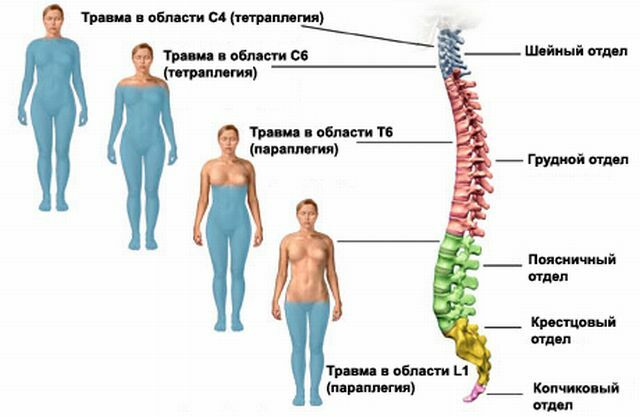
Damage appearance
Manifestations of damage to the spinal cord depend on the location of the injury. For example, if the spinal cord is damaged in the cervical region, paralysis can develop on both hands and feet. But if the damage is lower( for example, in the lumbar region), only the lower extremities will be paralyzed.
Symptoms also depend on the degree of damage. With partial damage a person may not completely lose motor function and sensitivity, but with full all tissues located below the localization of trauma, lose sensitivity. The extremity in this case paralyzes.
The spinal cord injury can be recognized by the following symptoms:
- severe pain or burning in the spine in the area of injury;
- absence or decreased sensitivity;
- loss of coordination;
- weakness;
- inability to move;
- disruption of the bowel and bladder;
- Numbness of the feet, fingers, or other parts of the body;
- intermittent breathing or coughing;
- the bent or wrong position of the spine.
In injuries, the sensitivity is reduced or absent. A person does not feel not only pain, but also warmth, cold and so on.
First aid: how to behave?
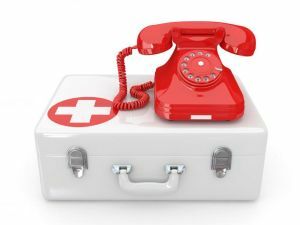 When getting a spinal cord injury, medical care should be provided as soon as possible.
When getting a spinal cord injury, medical care should be provided as soon as possible.
Correctly provided first aid increases the chances of a successful recovery and a complete recovery. In such cases, you can not lose even minutes.
If a person is injured in the spine before your eyes and there is a high risk of spinal cord injury, you should act as follows:
- Call an ambulance.
- Make sure the victim is conscious and can breathe.
- Fix the spine so that it becomes fixed. Suitable wooden boards or other smooth surfaces.
- Do not move the victim without an urgent need before an ambulance arrives. If he is lying on the ground, let him remain in that position.
- If a person needs to be shifted, do not use a blanket or fabric to transfer. The spine should not bend and change its position.
- Stay with the patient before an ambulance arrives.
In some cases, obvious signs of spinal cord injury( numbness or paralysis) do not appear immediately, so in the case of a person who has suffered extensive back or head trauma, care should be taken to keep him motionless until the diagnosis is clarified by the doctors.
In a medical institution
If an injury is suspected, emergency workers must immobilize the spine in order to avoid the development of complications or 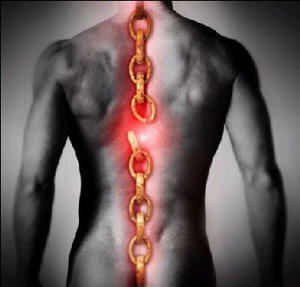 greater damage. When a patient is taken to a hospital, a neurosurgeon and a neurologist must examine it. The doctor checks the sensitivity of the tissues, motor and other functions.
greater damage. When a patient is taken to a hospital, a neurosurgeon and a neurologist must examine it. The doctor checks the sensitivity of the tissues, motor and other functions.
To make an accurate diagnosis, the victim is sent for instrumental research. A complete picture of the condition of the spine and spinal cord can be seen:
- radiography;
- computed tomography;
- magnetic resonance imaging.
When a patient is suspected of having a spinal cord injury, medical personnel should constantly monitor the operation of the internal organs( GI, bladder), arterial pressure, heart function and breathing. For the period of the passage of studies and tests, the patient is given sedatives.
After an accurate diagnosis, the patient is sent to the intensive care unit, and the neurosurgeon selects the appropriate treatment based on the degree of damage to the spinal cord. Treatment may include such techniques:
- Conservative( medicamentous) treatment of .The patient is prescribed Solumedrol. Treatment with corticosteroid
 is necessary in case of acute spinal cord injury. The drug reduces the number of damaged neurons and reduces the spread of the inflammatory process. If Solumedrol is taken within the first 8 hours after getting the injury, the chance of a full recovery grows.
is necessary in case of acute spinal cord injury. The drug reduces the number of damaged neurons and reduces the spread of the inflammatory process. If Solumedrol is taken within the first 8 hours after getting the injury, the chance of a full recovery grows. - Immobilization of .With the help of tires and a special rigid collar, the spine is fixed, which helps to avoid the development of complications and worsening of the patient's condition.
- Surgical intervention .In some cases( in the presence of fragments, hernia, etc.), an immediate operation is required. Surgical intervention allows you to eliminate the compression, remove debris or other damage. During surgery, the spine is also fixed by special metal structures.
Innovation from Russian scientists:
After an acute period, the patient has to go a long way to rehabilitation. Usually it includes:
- physiotherapy procedures;
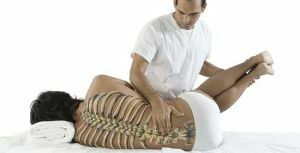
- taking medications aimed at eliminating symptoms and preventing the development of complications( infection of the bladder and so on);
- wheelchair adaptation;
- re-adaptation of the place of residence, constructive changes in the house are included;
- occupational therapy and special rehabilitation programs aimed at restoring physical health and psycho-emotional state.
Consequences of one careless step. ..
Since the spinal cord performs several important functions in the body, its damage can lead to serious complications. With partial damage, the chances of completely returning to normal life are great, but the rehabilitation period can take from several months to several years.
Many patients suffer from complete or partial paralysis. With complete damage, there is no chance of getting back on its feet, and the risk of death is also great.
Other complications after a spinal cord injury can be:
- occlusion of the vessels of the limbs;
- problems with urination( infection of the bladder);Pressure sores;
- disorders in the digestive tract;
- the sexual function is lost;
- severe pain in the area of damage or other parts of the body and so on.
The lack of sensitivity increases the risk of new injuries( cuts, burns, and so on).
Beware, this is very dangerous!
No one is immune from damage to the spinal cord, but in order to reduce the risk of injury, follow the following recommendations: 
- always use insurance when climbing;
- be careful on the road;
- do not dive into the water in an unfamiliar place;
- be extremely careful if it is ice on the street;
- observe all safety precautions at work and so on.
Injury to the spinal cord can permanently change your lifestyle, or can lead to death, so always be careful and careful.



